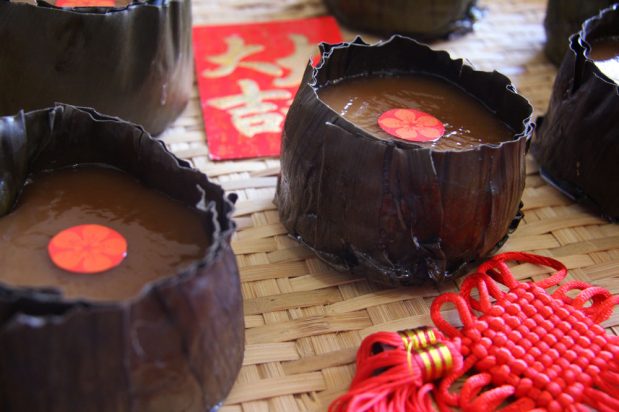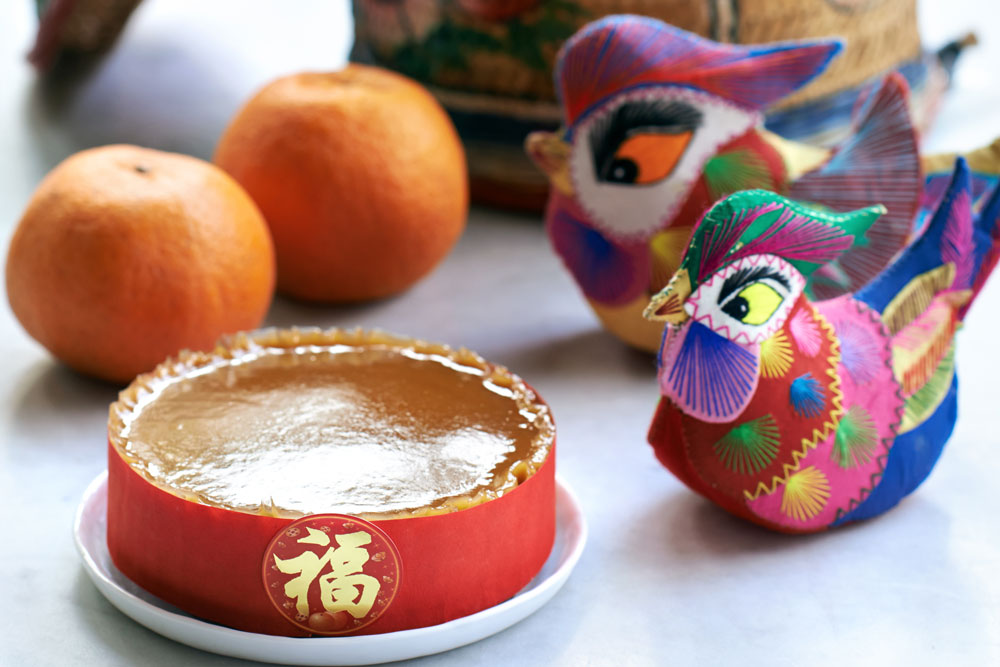Directions
To Cook
- Get ready steamer, put water and bring to boil under high heat.
- For the nian gao base, cut up the banana leaves into sections of 15-20 cm. If using fresh leaves, boil a pot of water and blanch the leaves first. This will make the leaves less brittle and easier to mould. Pat leaves dry with cloth or kitchen towel.
- Using a recycled tin can, wrap one banana leaf at a time around the can and fold the access leaf on top, into the can. Use a smaller can to press excess leaf firmly into the bottom of the can to form part of the base. Repeat steps with another 1-2 banana leaves. Use a rubber band to secure the banana leaves around the can. Then, cut a round piece of banana leaf, slightly bigger than the diameter of the can, and press it to the bottom of the can to form the base. You’ll need to prepare 5-7 of these moulds for this recipe, depending on the size of the cans you use.
- In a pot over medium heat, add sugar and water to cook until it turns golden brown and forms a thick syrup. Keep stirring to avoid burning. Then, pour the syrup in a big mixing bowl, add glutinous rice flour, and stir until as well combined.
- Strain the mixture and portion them into the banana leaf moulds. Cover each mould with aluminium foil and steam in the steamer for 1-2 hrs or until the nian gao is set.
- Nian gao is sticky and soft when hot. It will gradually harden as it cools. It is rarely enjoyed on its own but it’s cut into slices (when cold and set) and made into other delectable snacks; deep-fried with egg, steamed with coconut, deep-fried with potato and yam or baked in puff pastry.




 (7)
(7)
-453x300.jpg)
 (5)
(5)
-453x300.jpg)
You must be logged in to post a comment.